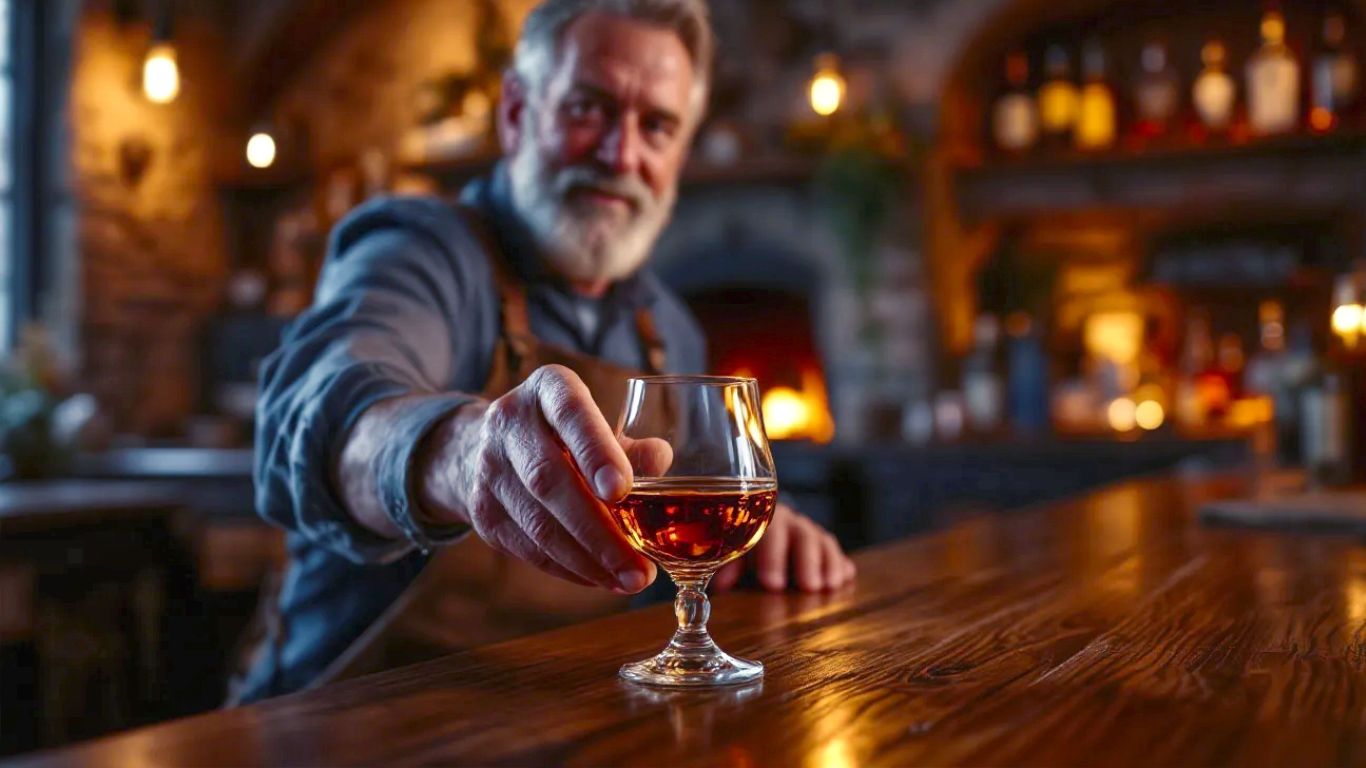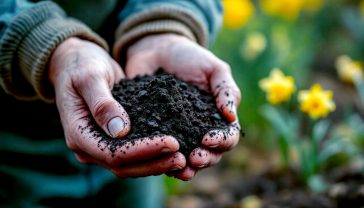A Guide to the Whiskies of Scotland: Single Malt and Beyond
An essential guide to Scotch whisky for British enthusiasts. We explore the history, regions, and tasting notes to help you find your perfect dram.

This post may contain affiliate links. If you make a purchase through these links, we may earn a commission at no additional cost to you.
Scotch whisky isn’t just a drink. It’s a story captured in a bottle. It’s the taste of rain-swept hills, salty sea air, and smoky peat fires. It’s a craft passed down through generations, a cornerstone of Scottish culture, and a spirit loved all over the world. For many in Britain, it’s the ultimate dram to warm you on a cold night or to celebrate a special moment.
But let’s be honest, the world of Scotch can feel a bit daunting. You walk into a shop and see walls lined with bottles. Words like ‘single malt’, ‘Speyside’, ‘peaty’, and ‘cask strength’ are thrown around, and it’s easy to feel lost. What’s the difference between a £30 bottle and a £300 one? And where on earth do you start?
Don’t worry. This guide is here to unravel the mystery. We’ll take a journey through the heart of Scotland, exploring how this golden liquid is made, discovering the unique character of each whisky region, and learning how to taste it like a pro. Think of it as your friendly map to the wonderful world of Scotch. By the end, you won’t just know your single malts from your blends; you’ll understand the soul of Scotland’s national drink. So, pour yourself a small measure (or a ‘dram’, as we say), get comfortable, and let’s begin.
What Exactly Is Scotch Whisky? The Golden Rules
Before we dive into the deep end, let’s get the basics straight. Not every whisky is a Scotch whisky. To earn that prestigious name, the spirit has to follow a strict set of rules, protected by UK law. It’s like a recipe that guarantees quality and tradition.
Here are the non-negotiables:
- It Must Be Made in Scotland: This is the big one. If it’s not distilled and matured in Scotland, it simply cannot be called Scotch. It’s a product of its environment, from the water source to the air that seeps into the casks.
- It Must Be Made from Water and Malted Barley: The core ingredient is barley, which is tricked into sprouting in a process called ‘malting’. Other whole cereal grains (like wheat or corn) can be added for certain types of whisky, but malted barley is the heart of it all.
- It Must Be Matured in Oak Casks for at Least Three Years: This is where the magic happens. The raw spirit, which comes off the still clear and fiery, is put into oak barrels and left to rest. Over time, it mellows out, soaking up colour and complex flavours from the wood. The minimum is three years, but many of the best whiskies are aged for much longer—10, 12, 18 years, or even more.
- It Must Have a Minimum Strength of 40% ABV: When it’s bottled, Scotch whisky must be at least 40% alcohol by volume (ABV). Some are bottled at a higher ‘cask strength’, meaning they haven’t been diluted with water, but 40% is the baseline.
- No Funny Business: Nothing can be added to the final product except water (to reduce the strength) and plain caramel colouring (E150a), which is sometimes used to ensure a consistent colour between batches. No flavourings, no sweeteners—just pure, unadulterated whisky.
These rules ensure that every bottle of Scotch whisky you buy meets a high standard. It’s a promise of quality that has been protected for over a century.
The Story of Scotch: From Medicine to National Treasure
The history of Scotch is a dramatic tale of monks, smugglers, and canny businessmen. It’s a story that’s woven into the very fabric of Scotland itself.
The First Drop: Uisge Beatha
The art of distillation—turning a fermented liquid into a potent spirit—was likely brought to Scotland by travelling monks from Ireland in the 15th century. They called the spirit uisge beatha (pronounced ‘oosh-ga beh-ha’), which is Gaelic for “water of life.” The first official record of this potent liquid comes from 1494, when the Exchequer Rolls (the King’s tax records) noted an order of malt for a Friar John Cor to make aqua vitae, the Latin equivalent.
Back then, it wasn’t a drink for sipping by the fire. It was a raw, fiery spirit, often flavoured with herbs and used as medicine to treat everything from colic to smallpox. It was produced in small batches on farms and in monasteries, a far cry from the global industry we know today.
The Tax Man and the Smugglers
Things changed in the 17th and 18th centuries. The government, needing to fund wars and its own expansion, realised it could make a lot of money by taxing whisky production. The 1707 Act of Union between England and Scotland led to sky-high taxes on malt and distilleries.
Did the Scots stop making whisky? Of course not. They just went underground.
This sparked a golden age of illicit distilling and smuggling. For over 150 years, thousands of illegal stills, hidden in remote glens and hillsides, produced whisky away from the prying eyes of the taxman, or ‘exciseman’. It was a national sport. Smugglers would use ingenious tricks to move the spirit, hiding it in everything from coffins to hollowed-out Bibles. This era shaped the character of Scotch, forcing distillers to be resourceful and cementing whisky’s place as a symbol of Scottish defiance.
The Birth of the Modern Industry
The game-changer was the Excise Act of 1823. The Duke of Gordon, a savvy landowner, argued that if the government lowered the tax to a reasonable level, distillers would happily go legitimate. He was right. The Act slashed duties and introduced a licence fee, making it affordable to produce whisky legally. One of the first to get a licence was George Smith, whose distillery in a remote glen would become world-famous: The Glenlivet.
This period also saw two crucial inventions. In 1826, Robert Stein invented the column still (later perfected by Aeneas Coffey), which could produce a lighter, less intense spirit much more efficiently than the traditional pot stills. This new ‘grain whisky’ was cheaper to make and paved the way for another innovation: blended Scotch whisky.
Pioneers like Andrew Usher, Johnnie Walker, and James Chivas began mixing the fiery, characterful single malts with the smoother, milder grain whiskies. The result was a consistent, accessible, and highly drinkable product. Blended Scotch was born, and it took the world by storm. It transformed Scotch from a local curiosity into a global phenomenon, enjoyed across the British Empire and beyond.
How Scotch Is Made: A Journey from Barley to Bottle
Making Scotch is an art form, a slow and careful process that turns three simple ingredients—barley, water, and yeast—into something truly extraordinary. Every stage has a profound impact on the final flavour.
Step 1: Malting
The journey begins with barley. The barley grains are steeped in water for a couple of days to trick them into thinking it’s springtime and time to grow. This is called germination. As the grains start to sprout, they release enzymes that convert the starches inside into soluble sugars. This is crucial, as yeast can only feed on sugar to create alcohol.
After a few days, the germination is stopped by drying the barley in a kiln. And here we come to a critical fork in the road for flavour: peat.
The Magic of Peat
Peat is essentially decomposed plant matter, dug up from the boggy landscapes of Scotland. For centuries, it was the only available fuel in many parts of the Highlands and Islands. When used to dry the barley, the smoky peat fire infuses the grains with compounds called phenols. This is what gives some whiskies—particularly those from Islay—their distinctive smoky, medicinal, and sometimes TCP-like aromas. The amount of smokiness can be controlled by how long the barley is exposed to the peat smoke.
Whiskies made without peat-dried barley are called unpeated. They tend to be lighter and focus more on fruity, floral, or malty notes.
Step 2: Mashing
The dried, malted barley is now ground into a coarse flour called grist. The grist is mixed with hot water in a huge, round vessel called a mash tun. This is like making a giant bowl of porridge. The hot water dissolves the sugars from the grist, creating a sweet, sugary liquid called wort. The leftover solids are drained off and often used as cattle feed—nothing goes to waste.
Step 3: Fermentation
The wort is cooled and pumped into enormous vats called washbacks, which can be made of either traditional Oregon pine or modern stainless steel. Here, yeast is added. The yeast gets to work, feasting on the sugars in the wort and converting them into alcohol.
This process, fermentation, takes about two to three days and produces a frothy, beer-like liquid with an ABV of around 8%, known as wash. The type of yeast and the length of fermentation can create different flavours. Longer fermentations tend to produce more complex, fruity, and estery notes.
Step 4: Distillation
This is where the alcohol is separated and concentrated. For single malt Scotch, this is done using traditional copper pot stills. The copper is vital, as it reacts with the spirit to remove unwanted sulphuric compounds, resulting in a smoother, cleaner taste.
The wash is heated in the first, larger still, called the wash still. Since alcohol boils at a lower temperature than water, it evaporates first. The vapour travels up the neck of the still, cools in a condenser, and turns back into a liquid. This liquid, now around 20% ABV, is called low wines.
This process is then repeated in a second, smaller still, the spirit still. This time, the distiller is much more selective. The first part of the liquid to come off—the foreshots—is too harsh and full of volatile compounds. The last part—the feints—is too weak and oily. Both are discarded (or rather, recycled into the next batch).
The distiller’s skill lies in knowing exactly when to make the ‘cut’ to collect the heart of the run: the new-make spirit. This is the pure, clear, and potent liquid (around 70% ABV) that will become whisky. The shape of the pot stills plays a huge role here. Tall, slender stills (like Glenmorangie’s) create a lighter, more delicate spirit, while short, squat stills (like Lagavulin’s) produce a richer, oilier spirit.
Step 5: Maturation
The new-make spirit is now ready for its long sleep. It’s diluted slightly with water and filled into oak casks. This is arguably the most important stage for developing flavour—it’s said that up to 80% of a whisky’s final character comes from the cask.
There are two main types of oak casks used in Scotland:
- American Oak (Quercus Alba): These usually previously held American bourbon. Bourbon laws state that casks can only be used once, so there’s a thriving trade in second-hand barrels. They tend to impart sweet, vanilla, caramel, and coconut notes.
- European Oak (Quercus Robur): These often previously held Spanish sherry. They are much more expensive but give the whisky rich, spicy, and dried fruit flavours, like Christmas cake, raisins, and cloves.
During maturation, three things happen. The spirit extracts colour and flavour from the wood. The harsher compounds in the spirit are softened and mellowed. And the spirit interacts with the air that breathes through the porous oak. A small amount of whisky (around 2% per year) evaporates through the wood. This is poetically known as the “angel’s share.”
The longer the whisky stays in the cask, the more it absorbs the wood’s character. This is why older whiskies are generally smoother, more complex, and more expensive—not just because of the time, but because there’s less of it left in the barrel.
The Different Types of Scotch Whisky
Now that we know how it’s made, let’s look at the different categories you’ll see on a label. There are five official types of Scotch whisky.
1. Single Malt Scotch Whisky
This is the one that often gets the most attention from connoisseurs. A single malt must be made exclusively from 100% malted barley, distilled in pot stills, and be the product of a single distillery. Famous examples include Glenfiddich, Macallan, Laphroaig, and Talisker. They are celebrated for expressing the unique character of the distillery that made them.
2. Single Grain Scotch Whisky
Don’t let the name fool you. Single grain doesn’t mean it’s made from just one type of grain. It means it’s the product of a single distillery, but it can be made from a mix of cereals, including barley, corn, or wheat. It’s typically distilled in a continuous column still, resulting in a lighter and milder spirit. It’s the backbone of blends but is also sometimes bottled on its own.
3. Blended Scotch Whisky
This is the most common and best-selling type of Scotch in the world. As the name suggests, a blended Scotch is a mixture of one or more single malts with one or more single grains. The art of the master blender is to combine these different whiskies—sometimes up to 40 or 50 of them—to create a consistent, balanced, and harmonious final product. Famous blends include Johnnie Walker, Bell’s, Famous Grouse, and Chivas Regal.
4. Blended Malt Scotch Whisky
This is a blend of two or more single malts from different distilleries. There is no grain whisky in the mix. These used to be called ‘vatted malts’. They offer a great way to experience a combination of different distillery characters. Monkey Shoulder is a well-known example.
5. Blended Grain Scotch Whisky
This is the least common category. It’s a blend of two or more single grain whiskies from different distilleries.
A Tour of Scotland’s Whisky Regions
Scotland’s whisky landscape is traditionally divided into several distinct regions. While the lines have blurred over time, each region is still known for a general style of whisky, shaped by its geography, traditions, and water source. Think of it like wine terroirs—the place matters.
1. Speyside
- Location: A fertile pocket in the north-east of Scotland, centred around the River Spey.
- Character: Fruity, sweet, and elegant. Often with notes of apple, pear, honey, vanilla, and floral hints. Can be unpeated or have just a whisper of smoke.
- Distilleries: This is the most densely populated whisky region in the world, home to over half of Scotland’s distilleries.
- Famous Names: Glenfiddich, The Macallan, Glenlivet, Balvenie, Aberlour.
- The Lowdown: If you’re new to single malts, Speyside is the perfect place to start. Its whiskies are generally approachable, smooth, and sophisticated. It’s the heartland of Scotch production.
2. The Highlands
- Location: The largest geographical region, covering the vast, rugged north of Scotland (excluding Speyside).
- Character: Incredibly diverse. There’s no single Highland style. You can find everything from light and citrusy whiskies in the north (Glenmorangie), to rich and fruity ones in the south (Glendronach), and robust, slightly peaty drams in the west. It’s a real mixed bag.
- Distilleries: They are spread far and wide.
- Famous Names: Glenmorangie, Dalmore, Oban, Glendronach, Tomatin.
- The Lowdown: The sheer variety of the Highlands means there’s something for everyone. It’s a region for explorers, offering a huge range of flavours to discover.
3. The Lowlands
- Location: The southern, flatter part of Scotland, below the Highland line.
- Character: Light, gentle, and delicate. Traditionally, Lowland whiskies were triple-distilled (like Irish whiskey), making them extra smooth. Expect floral, grassy, and creamy notes.
- Distilleries: Once a bustling region, it became very quiet, but is now experiencing a renaissance with new distilleries opening.
- Famous Names: Auchentoshan, Glenkinchie, Bladnoch.
- The Lowdown: Known as the “Lowland Ladies” for their soft and gentle nature, these are perfect aperitif whiskies—light, easy-drinking, and a great entry point into the world of Scotch.
4. Islay
- Location: A small, wind-swept island off the west coast of Scotland. Pronounced ‘eye-la’.
- Character: Big, bold, and heavily peated. The classic Islay style is intensely smoky, medicinal, and maritime, with notes of seaweed, tar, iodine, and TCP. It’s a love-it-or-hate-it flavour.
- Distilleries: Despite its small size, it has nine iconic distilleries.
- Famous Names: Lagavulin, Laphroaig, Ardbeg (the peaty heavyweights), but also Bowmore (more balanced) and Bruichladdich and Bunnahabhain (which often produce unpeated styles too).
- The Lowdown: Islay is for the adventurous. If you love strong, powerful flavours, this is your island. A dram of Laphroaig is like drinking a bonfire on the beach—in the best possible way.
5. The Islands
- Location: A catch-all category for the whisky-producing islands other than Islay. This includes Skye, Jura, Mull, Arran, and Orkney.
- Character: Hugely varied, but often with a coastal or maritime influence. They strike a balance between the fruity elegance of the mainland and the peaty punch of Islay.
- Distilleries: A fascinating and characterful collection.
- Famous Names: Talisker (Skye) is famous for its peppery, smoky, and maritime kick. Highland Park (Orkney) is known for its heathery honey sweetness and gentle floral smoke. Arran produces a creamy, citrusy spirit.
- The Lowdown: The Islands offer a fantastic bridge between different styles. If you find Islay too intense but want something with a bit of smoke and coastal character, Talisker is a perfect choice.
6. Campbeltown
- Location: A small town on the Kintyre Peninsula on the west coast.
- Character: Complex, robust, and full-bodied, with a distinctive salty or briny note. You might find a combination of fruit, peat smoke, and vanilla.
- Distilleries: Once the self-proclaimed ‘whisky capital of the world’ with over 30 distilleries, the industry collapsed, and today only three remain.
- Famous Names: Springbank, Glengyle (Kilkerran), Glen Scotia.
- The Lowdown: Campbeltown is the comeback kid. Its whiskies are highly respected by enthusiasts for their unique, old-school character. Springbank, in particular, is a cult favourite as it’s one of the few distilleries that still does everything on-site, from malting its own barley to bottling.
How to Taste Scotch Whisky Like an Expert
Tasting whisky isn’t about downing it in one. It’s about taking your time to appreciate the incredible complexity of aromas and flavours locked inside the glass. Here’s a simple four-step guide to get you started.
1. The Glass
First, ditch the tumbler. Those wide-rimmed glasses are fine for a whisky and coke, but for tasting, they let all the precious aromas escape. What you want is a tulip-shaped glass, like a Glencairn glass. The wide bowl allows you to swirl the whisky, while the narrow rim concentrates the aromas and channels them towards your nose.
2. The Look (Colour)
Pour a small measure into your glass. Hold it up to the light and look at the colour. Is it pale straw, golden honey, or deep amber? The colour can give you clues about the cask it was aged in. Lighter colours often suggest bourbon casks, while darker, reddish hues can point to sherry casks. An older whisky is also generally darker than a younger one.
Now, give the glass a gentle swirl and watch the liquid run down the sides. The oily streaks are called legs or tears. Thicker, slower-moving legs can indicate an older, more viscous, and possibly higher-alcohol whisky.
3. The Smell (Nose)
This is the most important step. Your nose can detect thousands of different scents, far more than your tongue can taste. Don’t stick your nose right in the glass and take a huge sniff—the alcohol will overwhelm you.
Instead, hold the glass a few inches away and gently wave it under your nose. What do you smell? Then, bring it a little closer. Take small, gentle sniffs. Keep your mouth slightly open as you do.
Think about the families of smells. Is it:
- Fruity? (Apples, pears, citrus, dried fruit, berries)
- Smoky? (Bonfire, peat smoke, TCP, kippers)
- Sweet? (Vanilla, honey, caramel, toffee)
- Spicy? (Cinnamon, cloves, pepper)
- Malty? (Cereal, biscuit, toast)
- Floral? (Grass, heather, perfume)
To Add Water or Not?
Adding a few drops of room-temperature water can be transformative. It lowers the alcohol content, which can stop the burn and open up the whisky, revealing hidden layers of aroma and flavour. This is especially true for cask-strength whiskies. The key is to add it drop by drop. You can always add more, but you can’t take it out.
4. The Taste (Palate and Finish)
Take a small sip and let it coat your entire mouth. Don’t swallow it straight away. Think about the texture or mouthfeel. Is it thin and light, or thick, creamy, and oily?
Now, focus on the flavours. Are they the same as the aromas you smelled? Do they change? Often, the initial taste will be sweet, followed by spicier or smokier notes.
Finally, swallow the whisky and pay attention to the finish. This is the lingering taste that stays in your mouth after you’ve swallowed. Is it short or long? Is it warming? Does it leave a pleasant taste of smoke, spice, or sweet oak? A long, complex finish is often the sign of a high-quality whisky.
Building Your Whisky Collection: Tips for Beginners
Ready to start exploring? Here are a few tips for buying your first bottles.
- Start with the Classics: You can’t go wrong by trying a flagship bottling from each of the main regions to understand their signature styles. For example:
- Speyside: Glenfiddich 12 or Glenlivet 12 (fruity and accessible).
- Highlands: Glenmorangie 10 (light and citrusy) or Oban 14 (richer with a hint of salt and smoke).
- Lowlands: Auchentoshan American Oak (smooth and sweet).
- Islay: Laphroaig 10 or Ardbeg 10 (if you want to dive into peat) or Bowmore 12 (for a more balanced smoke).
- Islands: Talisker 10 (peppery, smoky, and maritime).
- Don’t Be an Age Snob: Older doesn’t always mean better, just different (and more expensive). There are many fantastic younger whiskies packed with flavour. An age statement simply tells you the age of the youngest whisky in the bottle.
- Visit a Good Whisky Shop: Don’t just grab a bottle at the supermarket. Go to a specialist shop where the staff are knowledgeable and passionate. Tell them what you like (even if it’s other drinks like rum or red wine) and they can recommend something you’ll enjoy.
- Try Before You Buy: Many pubs and bars have a decent whisky selection. It’s a great way to try a dram of something expensive before committing to a whole bottle. Whisky festivals and tasting events are also brilliant for this.
The Future of Scotch: Tradition Meets Innovation
The world of Scotch whisky is constantly evolving. While tradition is cherished, distilleries are also innovating like never before. They are experimenting with different types of barley, unusual yeast strains, and a huge variety of casks—from rum and port pipes to craft beer barrels.
The industry is also becoming more environmentally conscious, with many distilleries working to reduce their carbon footprint and improve sustainability. At the same time, a new wave of craft distilleries is popping up all over Scotland, bringing fresh ideas and challenging the old ways of doing things.
Scotch whisky has been around for over 500 years. It has survived wars, prohibition, and economic depressions. It’s a story of resilience, craftsmanship, and a deep connection to the Scottish landscape. It’s more than just a drink—it’s the water of life. And its story is far from over. Slàinte mhath! (Good health!)
Further Reading
For those looking to continue their journey, these resources are highly respected in the whisky community:
- Scotch Whisky Association (SWA): The official industry body, offering legal definitions and industry news. www.scotch-whisky.org.uk
- Whisky Magazine: A leading publication with reviews, features, and distillery profiles. www.whiskymag.com
- Master of Malt: A brilliant online retailer with an incredibly detailed blog and tasting notes for thousands of whiskies. www.masterofmalt.com
- The World Atlas of Whisky by Dave Broom: An essential book for any enthusiast, offering a comprehensive look at whiskies from around the globe, with a deep focus on Scotland.






